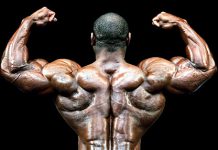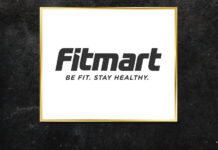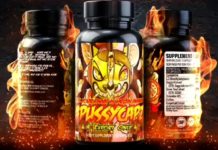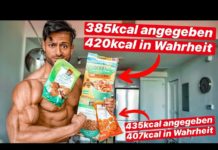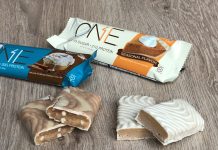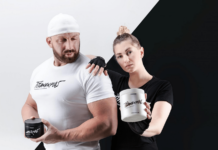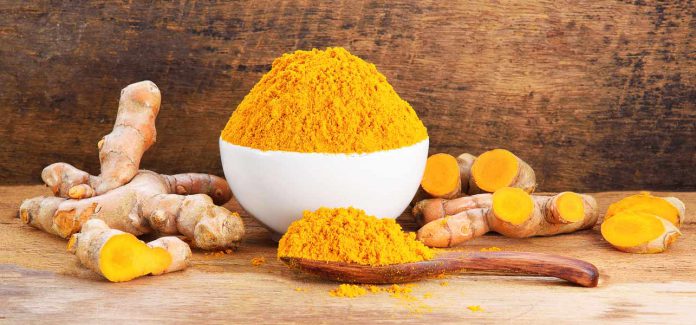Kurkuma, auch Turmeric genannt, ist eine Pflanze, die eines der Hauptgewürze in Curry darstellt und auch bei anderen Nahrungsmitteln als Gewürz zum Einsatz kommt. Die Wurzel kann man jedoch auch zur Herstellung von Medizin verwenden. Hierbei wird Turmeric bei Arthritis, Sodbrennen, Magenschmerzen, Durchfall, Blähungen, Völlegefühl, Appetitverlust, Gelbsucht, Leberproblemen und Gallenblasenproblemen eingesetzt. Darüber kann man die Pflanze auch bei Kopfschmerzen, Bronchitis, Erkältungen, Lungeninfektionen, Fibromyalgie, Lepra, Fieber, Menstrualproblemen und Krebs einsetzen. Weitere Anwendungsbereiche umfassen Depressionen, Alzheimer, Wassereinlagerungen, Wurmbefall und Nierenprobleme. Einige Menschen tragen Kurkuma bei Schmerzen, Blutergüssen, Augeninfektionen, entzündlichen Hautkrankheiten, Schmerzen im Mund und infizierten Wunden auf die Haut auf.
Wie wirkt Kurkuma?
Die in Turmeric enthaltenen Chemikalien könnten entzündliche Schwellungen reduzieren. Deshalb ist die Pflanze bei folgenden Anwendungsbereichen möglicherweise effektiv:
- Magenverstimmungen: Einige Untersuchungen zeigen, dass eine orale Einnahme von Turmeric bei Magenverstimmungen helfen könnte.
- Osteoarthritis: Einige Untersuchungen zeigen, dass die Einnahme bestimmter Turmeric Extrakte durch Osteoarthritis verursachte Schmerzen im Bereich des Knies reduzieren kann. Im Rahmen einer Studie wirkte Turmeric bei der Reduzierung von Schmerzen genauso gut wie Ibuprofen.
Es gibt nicht genügend wissenschaftliche Daten, um eine Aussage bezüglich der Effektivität von Kurkuma bei folgenden Anwendungsbereichen treffen zu können:
- Hautkrebs: Es gibt Hinweise darauf, dass ein Auftragen einer Turmeric Salbe dabei helfen könnte, Juckreiz und Geruchsbildung zu lindern, die durch Hautkrebs verursacht werden.
- Rheumatische Arthritis: Curcumin, eine in Turmeric enthaltene Chemikalie, könnte dabei helfen, einige Symptome einer rheumatischen Arthritis zu lindern.
Auch bezüglich der Effektivität von Kurkuma bei Gelbsucht, Hepatitis, Durchfall, Fibromyalgie, Leber- und Gallenblasenproblemen, Kopfschmerzen, Menstrualproblemen, Schmerzen, Borkenflechte, Blutergüssen, Augeninfektionen, Hautproblemen und Alzheimer gibt es nicht genügend wissenschaftliche Informationen. Deshalb benötigt man noch weitere wissenschaftliche Untersuchungen, um die Effektivität der Pflanze bei diesen Anwendungen bewerten zu können.
Sicherheit und Nebenwirkungen
Turmeric ist bei einer angemessenen Verwendung für Erwachsene wahrscheinlich sicher und unbedenklich. Die Pflanze ruft für gewöhnlich keine signifikanten Nebenwirkungen hervor. Bei einigen Menschen kann es jedoch zu Magenverstimmungen, Übelkeit, Schwindel oder Durchfall kommen.
Dosierung
- Magenverstimmungen: 500 mg Turmeric viermal täglich.
- Osteoarthritis: 500 mg eines spezifischen Turmeric Extrakts (Meriva) zweimal täglich. Auch 500 mg eines nichtkommerziellen Produkts viermal täglich wurden verwendet.
- Rheumatischer Arthritis: 500 mg einer spezifischen Zusammenstellung des Turmeric Inhaltsstoffes Curcumin (BCM-95®) zweimal täglich.
Referenzen:
-
Abdel Fattah, E. A., Hashem, H. E., Ahmed, F. A., Ghallab, M. A., Varga, I., and Polak, S. Prophylactic role of curcumin against cyclosporine-induced nephrotoxicity: Histological and immunohistological study. Gen.Physiol Biophys. 2010;29(1):85-94. View abstract.
-
Abe, Y., Hashimoto, S., and Horie, T. Curcumin inhibition of inflammatory cytokine production by human peripheral blood monocytes and alveolar macrophages. Pharmacol Res 1999;39(1):41-47. View abstract.
-
Abraham, S. K. and Kesavan, P. C. Genotoxicity of garlic, turmeric and asafoetida in mice. Mutat.Res. 1984;136(1):85-88. View abstract.
-
Abraham, S. K., Sarma, L., and Kesavan, P. C. Protective effects of chlorogenic acid, curcumin and beta-carotene against gamma-radiation-induced in vivo chromosomal damage. Mutat.Res 1993;303(3):109-112. View abstract.
-
Abraham, S., Abraham, S. K., and Radhamony, G. Mutagenic potential of the condiments, ginger and turmeric. Cytologia.(Tokyo) 1976;41(3-4):591-595. View abstract.
-
Abu-Rizq, H. A., Mansour, M. H., Safer, A. M., and Afzal, M. Cyto-protective and immunomodulating effect of Curcuma longa in Wistar rats subjected to carbon tetrachloride-induced oxidative stress. Inflammopharmacology. 2008;16(2):87-95. View abstract.
-
Abuarqoub, H., Green, C. J., Foresti, R., and Motterlini, R. Curcumin reduces cold storage-induced damage in human cardiac myoblasts. Exp.Mol.Med. 4-30-2007;39(2):139-148. View abstract.
-
Adapala, N. and Chan, M. M. Long-term use of an antiinflammatory, curcumin, suppressed type 1 immunity and exacerbated visceral leishmaniasis in a chronic experimental model. Lab Invest 2008;88(12):1329-1339. View abstract.
-
Adaramoye, O. A. and Medeiros, I. A. Involvement of Na(+)-Ca (2+) exchanger in the endothelium-independent vasorelaxation induced by Curcuma longa L. in isolated rat superior mesenteric arteries. J Smooth Muscle Res 2008;44(5):151-158. View abstract.
-
Adaramoye, O. A., Anjos, R. M., Almeida, M. M., Veras, R. C., Silvia, D. F., Oliveira, F. A., Cavalcante, K. V., Araujo, I. G., Oliveira, A. P., and Medeiros, I. A. Hypotensive and endothelium-independent vasorelaxant effects of methanolic extract from Curcuma longa L. in rats. J Ethnopharmacol. 7-30-2009;124(3):457-462. View abstract.
-
Adhikari, S., Indira, Priyadarsini K., and Mukherjee, T. Physico-chemical studies on the evaluation of the antioxidant activity of herbal extracts and active principles of some Indian medicinal plants. J Clin Biochem.Nutr. 2007;40(3):174-183. View abstract.
-
Adhikary, R., Mukherjee, P., Kee, T. W., and Petrich, J. W. Excited-state intramolecular hydrogen atom transfer and solvation dynamics of the medicinal pigment curcumin. J Phys.Chem.B 4-16-2009;113(15):5255-5261. View abstract.
-
Adhvaryu, M. R., Reddy, N., and Parabia, M. H. Effects of four Indian medicinal herbs on Isoniazid-, Rifampicin–induced hepatic injury and immunosuppression in guinea pigs. World J Gastroenterol. 6-21-2007;13(23):3199-3205. View abstract.
-
Adhvaryu, M. R., Reddy, N., and Vakharia, B. C. Prevention of hepatotoxicity due to anti tuberculosis treatment: a novel integrative approach. World J Gastroenterol. 8-14-2008;14(30):4753-4762. View abstract.
-
Adlerz, L., Beckman, M., Holback, S., Tehranian, R., Cortes, Toro, V, and Iverfeldt, K. Accumulation of the amyloid precursor-like protein APLP2 and reduction of APLP1 in retinoic acid-differentiated human neuroblastoma cells upon curcumin-induced neurite retraction. Brain Res Mol.Brain Res 11-6-2003;119(1):62-72. View abstract.
-
Agarwal, B. B. Do dietary spices impair the patient-reported outcomes for stapled hemorrhoidopexy? A randomized controlled study. Surg Endosc. 2011;25(5):1535-1540. View abstract.
-
Agarwal, B., Swaroop, P., Protiva, P., Raj, S. V., Shirin, H., and Holt, P. R. Cox-2 is needed but not sufficient for apoptosis induced by Cox-2 selective inhibitors in colon cancer cells. Apoptosis. 2003;8(6):649-654. View abstract.
-
Agarwal, K. A., Tripathi, C. D., Agarwal, B. B., and Saluja, S. Efficacy of turmeric (curcumin) in pain and postoperative fatigue after laparoscopic cholecystectomy: a double-blind, randomized placebo-controlled study. Surg Endosc. 6-14-2011; View abstract.
-
Agarwal, R. and Shukla, G. S. Potential role of cerebral glutathione in the maintenance of blood-brain barrier integrity in rat. Neurochem.Res 1999;24(12):1507-1514. View abstract.
-
Agarwal, R., Goel, S. K., and Behari, J. R. Detoxification and antioxidant effects of curcumin in rats experimentally exposed to mercury. J Appl.Toxicol 3-12-2010; View abstract.
-
Aggarwal, B. B. and Harikumar, K. B. Potential therapeutic effects of curcumin, the anti-inflammatory agent, against neurodegenerative, cardiovascular, pulmonary, metabolic, autoimmune and neoplastic diseases. Int.J Biochem.Cell Biol. 2009;41(1):40-59. View abstract.
-
Aggarwal, B. B. and Shishodia, S. Molecular targets of dietary agents for prevention and therapy of cancer. Biochem.Pharmacol 5-14-2006;71(10):1397-1421. View abstract.
-
Aggarwal, B. B. and Shishodia, S. Suppression of the nuclear factor-kappaB activation pathway by spice-derived phytochemicals: reasoning for seasoning. Ann.N.Y Acad.Sci. 2004;1030:434-441. View abstract.
-
Aggarwal, B. B. and Sung, B. Pharmacological basis for the role of curcumin in chronic diseases: an age-old spice with modern targets. Trends Pharmacol Sci. 2009;30(2):85-94. View abstract.
-
Aggarwal, B. B. Prostate cancer and curcumin: add spice to your life. Cancer Biol.Ther. 2008;7(9):1436-1440. View abstract.
-
Aggarwal, B. B., Banerjee, S., Bharadwaj, U., Sung, B., Shishodia, S., and Sethi, G. Curcumin induces the degradation of cyclin E expression through ubiquitin-dependent pathway and up-regulates cyclin-dependent kinase inhibitors p21 and p27 in multiple human tumor cell lines. Biochem.Pharmacol 4-1-2007;73(7):1024-1032. View abstract.
-
Aggarwal, B. B., Kumar, A., and Bharti, A. C. Anticancer potential of curcumin: preclinical and clinical studies. Anticancer Res. 2003;23(1A):363-398. View abstract.
-
Aggarwal, B. B., Kunnumakkara, A. B., Harikumar, K. B., Tharakan, S. T., Sung, B., and Anand, P. Potential of spice-derived phytochemicals for cancer prevention. Planta Med 2008;74(13):1560-1569. View abstract.
-
Aggarwal, B. B., Sethi, G., Ahn, K. S., Sandur, S. K., Pandey, M. K., Kunnumakkara, A. B., Sung, B., and Ichikawa, H. Targeting signal-transducer-and-activator-of-transcription-3 for prevention and therapy of cancer: modern target but ancient solution. Ann.N.Y Acad.Sci. 2006;1091:151-169. View abstract.
-
Aggarwal, B. B., Shishodia, S., Takada, Y., Banerjee, S., Newman, R. A., Bueso-Ramos, C. E., and Price, J. E. Curcumin suppresses the paclitaxel-induced nuclear factor-kappaB pathway in breast cancer cells and inhibits lung metastasis of human breast cancer in nude mice. Clin Cancer Res 10-15-2005;11(20):7490-7498. View abstract.
-
Aggarwal, B. B., Takada, Y., and Oommen, O. V. From chemoprevention to chemotherapy: common targets and common goals. Expert.Opin.Investig.Drugs 2004;13(10):1327-1338. View abstract.
-
Aggarwal, S., Ichikawa, H., Takada, Y., Sandur, S. K., Shishodia, S., and Aggarwal, B. B. Curcumin (diferuloylmethane) down-regulates expression of cell proliferation and antiapoptotic and metastatic gene products through suppression of IkappaBalpha kinase and Akt activation. Mol.Pharmacol 2006;69(1):195-206. View abstract.
-
Aggarwal, S., Takada, Y., Singh, S., Myers, J. N., and Aggarwal, B. B. Inhibition of growth and survival of human head and neck squamous cell carcinoma cells by curcumin via modulation of nuclear factor-kappaB signaling. Int.J Cancer 9-20-2004;111(5):679-692. View abstract.
-
Agrawal, D. K. and Mishra, P. K. Curcumin and its analogues: Potential anticancer agents. Med.Res Rev. 12-21-2009; View abstract.
-
Agrawal, D. K., Saikia, D., Tiwari, R., Ojha, S., Shanker, K., Kumar, J. K., Gupta, A. K., Tandon, S., Negi, A. S., and Khanuja, S. P. Demethoxycurcumin and its semisynthetic analogues as antitubercular agents. Planta Med. 2008;74(15):1828-1831. View abstract.
-
Agrawal, R., Mishra, B., Tyagi, E., Nath, C., and Shukla, R. Effect of curcumin on brain insulin receptors and memory functions in STZ (ICV) induced dementia model of rat. Pharmacol Res 2010;61(3):247-252. View abstract.
-
Agrawal, S. S. and Ittiyavirah, S. P. Role of cytokines in anti-implantation activity of H2 receptor blockers in albino Wistar rats. Immunopharmacol.Immunotoxicol. 2010;32(1):92-98. View abstract.
-
Ahmad, M. S., Sheeba, and Afzal, M. Amelioration of genotoxic damage by certain phytoproducts in human lymphocyte cultures. Chem.Biol.Interact. 10-15-2004;149(2-3):107-115. View abstract.
-
Ahmad, M., Theofanidis, P., and Medford, R. M. Role of activating protein-1 in the regulation of the vascular cell adhesion molecule-1 gene expression by tumor necrosis factor-alpha. J Biol.Chem. 2-20-1998;273(8):4616-4621. View abstract.
-
Ahmad-Raus, R. R., Abdul-Latif, E. S., and Mohammad, J. J. Lowering of lipid composition in aorta of guinea pigs by Curcuma domestica. BMC.Complement Altern Med 2001;1(1):6. View abstract.
-
Ahmed, T. and Gilani, A. H. Inhibitory effect of curcuminoids on acetylcholinesterase activity and attenuation of scopolamine-induced amnesia may explain medicinal use of turmeric in Alzheimer’s disease. Pharmacol Biochem.Behav. 2009;91(4):554-559. View abstract.
-
Ahmed, T., Enam, S. A., and Gilani, A. H. Curcuminoids enhance memory in an amyloid-infused rat model of Alzheimer’s disease. Neuroscience 6-9-2010; View abstract.
-
Ahmed, T., Gilani, A. H., Hosseinmardi, N., Semnanian, S., Enam, S. A., and Fathollahi, Y. Curcuminoids rescue long-term potentiation impaired by amyloid peptide in rat hippocampal slices. Synapse 2011;65(7):572-582. View abstract.
-
Ahmed, T., Tripathi, A. K., Suke, S. G., Kumar, V., Ahmed, R. S., Das, S., and Banerjee, B. D. Role of HSP27 and reduced glutathione in modulating malathion-induced apoptosis of human peripheral blood mononuclear cells: ameliorating effect of N-acetylcysteine and curcumin. Toxicol In Vitro 2009;23(7):1319-1325. View abstract.
-
Ahsan, H. and Hadi, S. M. Strand scission in DNA induced by curcumin in the presence of Cu(II). Cancer Lett. 2-13-1998;124(1):23-30. View abstract.
-
Ahsan, H., Parveen, N., Khan, N. U., and Hadi, S. M. Pro-oxidant, anti-oxidant and cleavage activities on DNA of curcumin and its derivatives demethoxycurcumin and bisdemethoxycurcumin. Chem.Biol.Interact. 7-1-1999;121(2):161-175. View abstract.
-
Ahuja, K. D., Kunde, D. A., Ball, M. J., and Geraghty, D. P. Effects of capsaicin, dihydrocapsaicin, and curcumin on copper-induced oxidation of human serum lipids. J Agric.Food Chem. 8-23-2006;54(17):6436-6439. View abstract.
-
Ak, T. and Gulcin, I. Antioxidant and radical scavenging properties of curcumin. Chem.Biol.Interact. 7-10-2008;174(1):27-37. View abstract.
-
Akazawa, N., Choi, Y., Miyaki, A., Tanabe, Y., Sugawara, J., Ajisaka, R., and Maeda, S. Curcumin ingestion and exercise training improve vascular endothelial function in postmenopausal women. Nutr Res 2012;32(10):795-799. View abstract.
-
Akhand, A. A., Hossain, K., Mitsui, H., Kato, M., Miyata, T., Inagi, R., Du, J., Takeda, K., Kawamoto, Y., Suzuki, H., Kurokawa, K., and Nakashima, I. Glyoxal and methylglyoxal trigger distinct signals for map family kinases and caspase activation in human endothelial cells. Free Radic.Biol.Med. 7-1-2001;31(1):20-30. View abstract.
-
Akrishnan, V. R. and Menon, V. P. Potential role of antioxidants during ethanol-induced changes in the fatty acid composition and arachidonic acid metabolites in male Wistar rats. Cell Biol.Toxicol 2001;17(1):11-22. View abstract.
-
Al Omar, F. A., Nagi, M. N., Abdulgadir, M. M., Al Joni, K. S., and Al Majed, A. A. Immediate and delayed treatments with curcumin prevents forebrain ischemia-induced neuronal damage and oxidative insult in the rat hippocampus. Neurochem.Res 2006;31(5):611-618. View abstract.
-
Al Sadi, R. M. and Kreydiyyeh, S. I. Mediators of interleukin-1 beta action Na(+)-K(+)ATPase in Caco-2 cells. Eur.Cytokine Netw. 2003;14(2):83-90. View abstract.
-
Al Sadi, R. M. and Ma, T. Y. IL-1beta causes an increase in intestinal epithelial tight junction permeability. J Immunol. 4-1-2007;178(7):4641-4649. View abstract.
-
Al Zanbagi, N. A. and Zelai, N. T. Two methods for attenuating Toxoplasma gondii tachyzoites RH strain by using ethanol extract of Curcuma longa. J Egypt Soc.Parasitol. 2008;38(3):965-976. View abstract.
-
Alaikov, T., Konstantinov, S. M., Tzanova, T., Dinev, K., Topashka-Ancheva, M., and Berger, M. R. Antineoplastic and anticlastogenic properties of curcumin. Ann.N.Y Acad.Sci. 2007;1095:355-370. View abstract.
-
Albuquerque, J. A., Lamers, M. L., Castiblanco-Valencia, M. M., Dos, Santos M., and Isaac, L. Chemical chaperones curcumin and 4-phenylbutyric acid improve secretion of mutant factor H R127H by fibroblasts from a factor H-deficient patient. J Immunol. 9-15-2012;189(6):3242-3248. View abstract.
-
Ali, B. H., Al Wabel, N., Mahmoud, O., Mousa, H. M., and Hashad, M. Curcumin has a palliative action on gentamicin-induced nephrotoxicity in rats. Fundam.Clin Pharmacol 2005;19(4):473-477. View abstract.
-
Ali, E. H. and Arafa, N. M. Comparative protective action of curcumin, memantine and diclofenac against scopolamine-induced memory dysfunction. Fitoterapia 2011;82(4):601-608. View abstract.
-
Ali, M. S., Mudagal, M. P., and Goli, D. Cardioprotective effect of tetrahydrocurcumin and rutin on lipid peroxides and antioxidants in experimentally induced myocardial infarction in rats. Pharmazie 2009;64(2):132-136. View abstract.
-
Ali, R. E. and Rattan, S. I. Curcumin’s biphasic hormetic response on proteasome activity and heat-shock protein synthesis in human keratinocytes. Ann.N.Y Acad.Sci. 2006;1067:394-399. View abstract.
-
Ali, S., Singh, N. N., Yildirim, H., and Ramji, D. P. Requirement for nuclear factor kappa B signalling in the interleukin-1-induced expression of the CCAAT/enhancer binding protein-delta gene in hepatocytes. Int.J Biochem.Cell Biol. 2010;42(1):113-119. View abstract.
-
Ali, T., Shakir, F., and Morton, J. Curcumin and inflammatory bowel disease: biological mechanisms and clinical implication. Digestion 2012;85(4):249-255. View abstract.
-
Allam, G. Immunomodulatory effects of curcumin treatment on murine schistosomiasis mansoni. Immunobiology 2009;214(8):712-727. View abstract.
-
Allen, P. C., Danforth, H. D., and Augustine, P. C. Dietary modulation of avian coccidiosis. Int.J Parasitol. 1998;28(7):1131-1140. View abstract.
-
Alves, L. V., Temporal, R. M., Cysne-Finkelstein, L., and Leon, L. L. Efficacy of a diarylheptanoid derivative against Leishmania amazonensis. Mem.Inst.Oswaldo Cruz 2003;98(4):553-555. View abstract.
-
Alwi, I., Santoso, T., Suyono, S., Sutrisna, B., Suyatna, F. D., Kresno, S. B., and Ernie, S. The effect of curcumin on lipid level in patients with acute coronary syndrome. Acta Med.Indones. 2008;40(4):201-210. View abstract.
-
Amakura, Y., Tsutsumi, T., Sasaki, K., Yoshida, T., and Maitani, T. Screening of the inhibitory effect of vegetable constituents on the aryl hydrocarbon receptor-mediated activity induced by 2,3,7,8-tetrachlorodibenzo-p-dioxin. Biol.Pharm Bull. 2003;26(12):1754-1760. View abstract.
-
Amara, A. A., El Masry, M. H., and Bogdady, H. H. Plant crude extracts could be the solution: extracts showing in vivo antitumorigenic activity. Pak.J Pharm Sci. 2008;21(2):159-171. View abstract.


